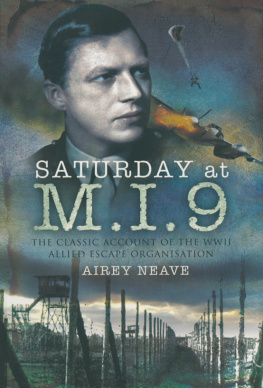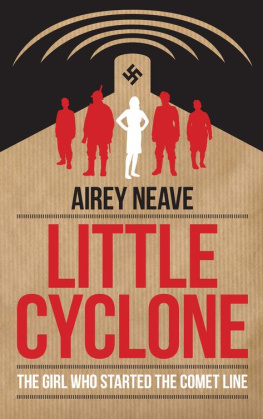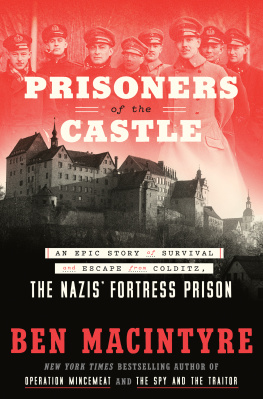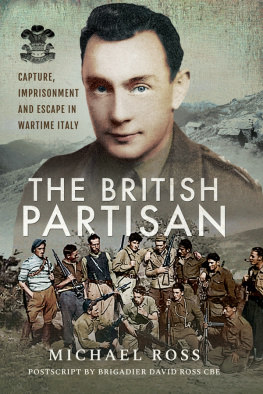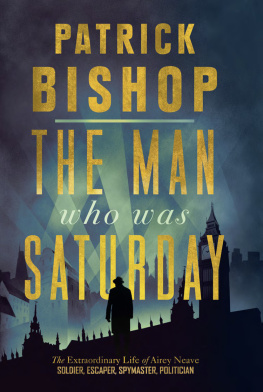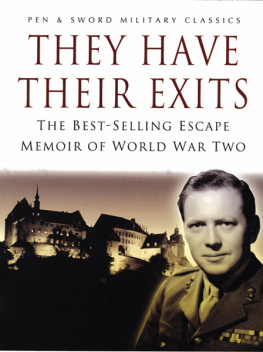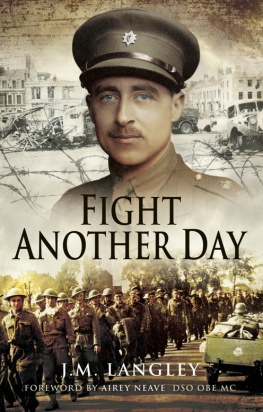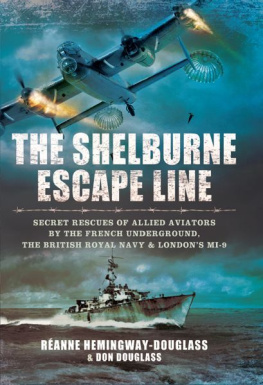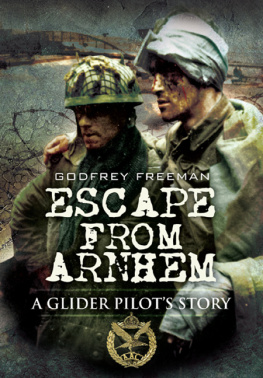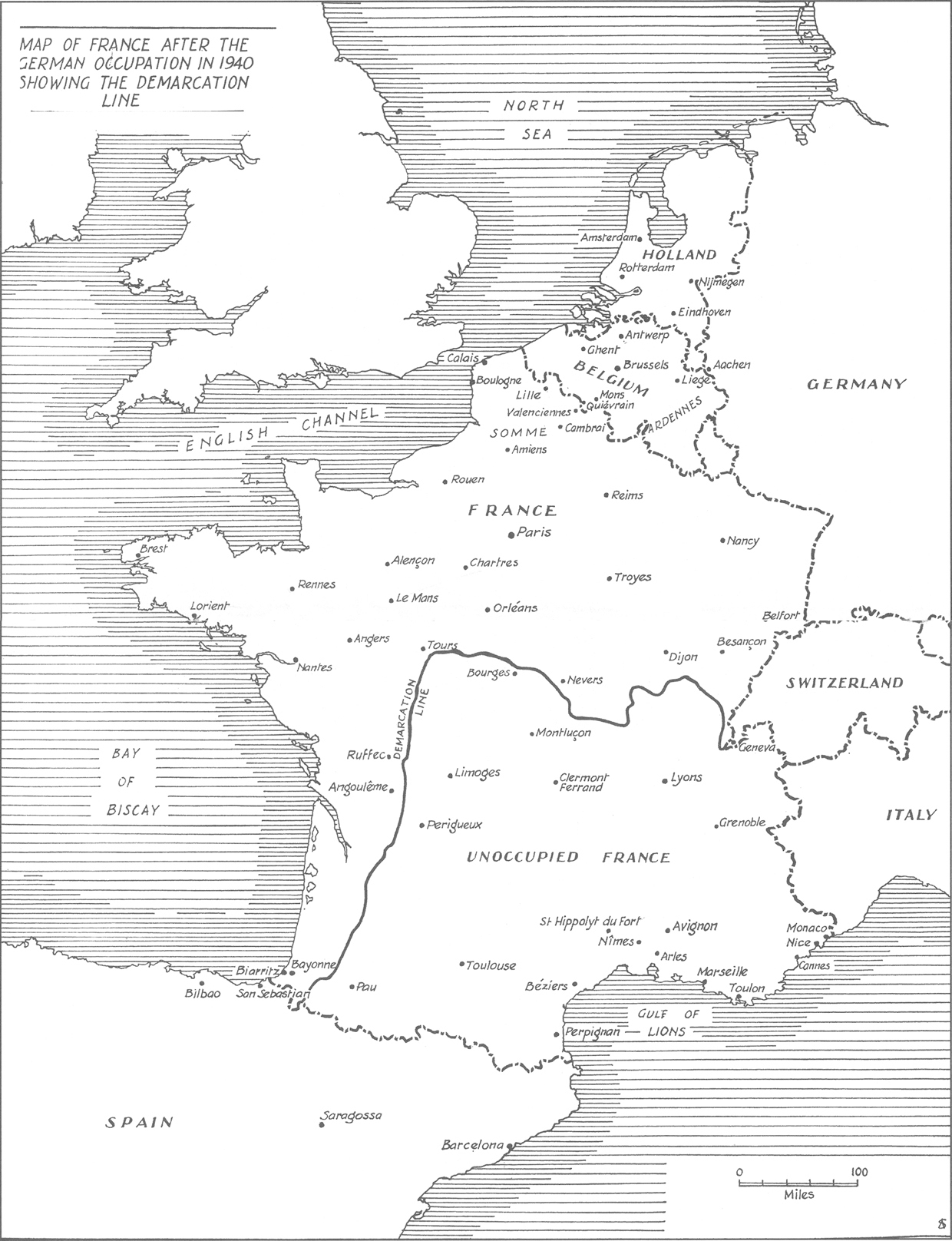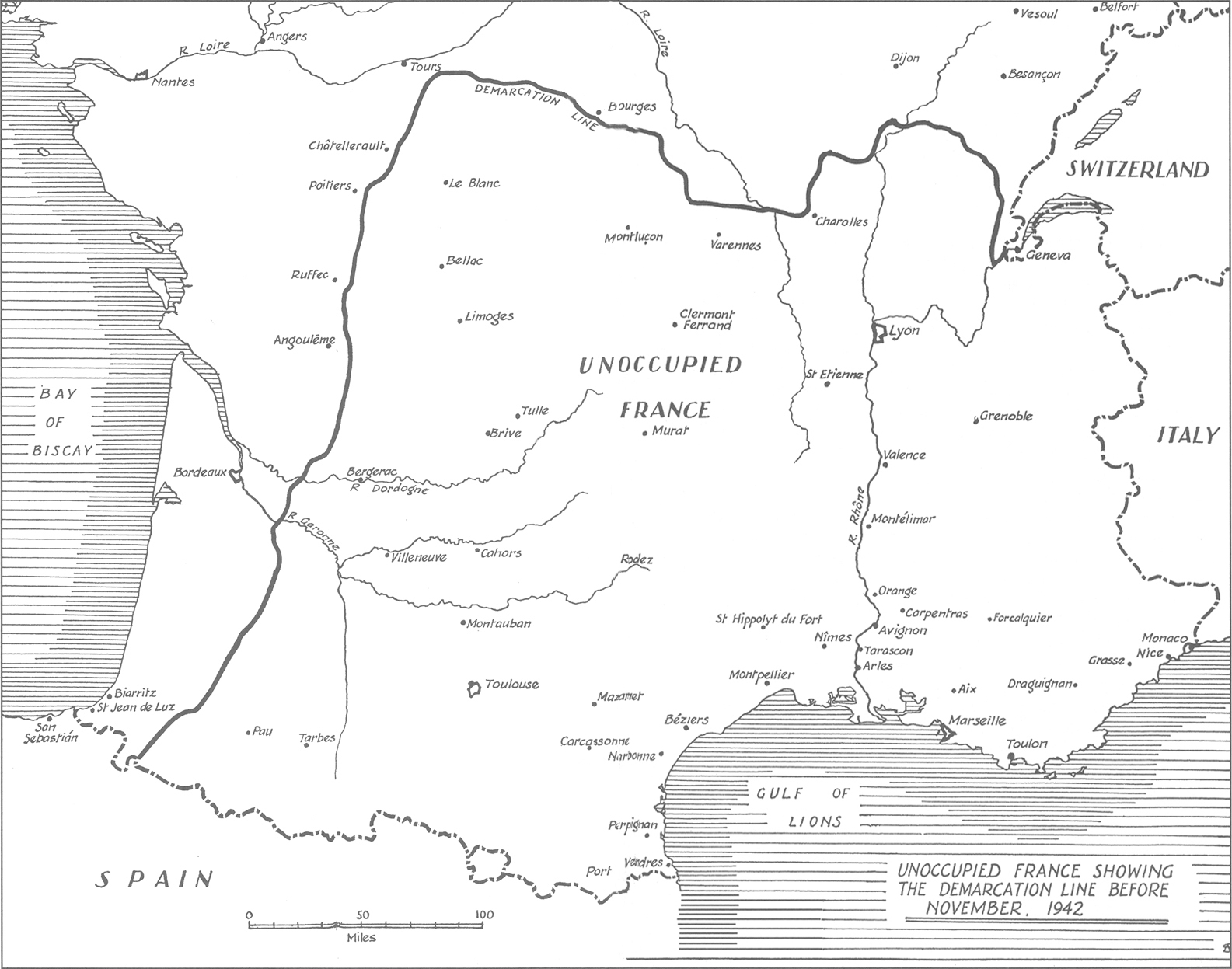SATURDAY AT M.I.9
SATURDAY
AT M.I.9
The Classic Account of the
WW2 Allied Escape Organisation
AIREY NEAVE
First published in Great Britain in 1969,
Reprinted by Leo Cooper in 2004,
Reprinted in this format in 2010 by
Pen & Sword Military
An imprint of
Pen & Sword Books Ltd
47 Church Street
Barnsley
South Yorkshire
S70 2AS
Copyright Airey Neave 1969
Copyright The Executors of Airey Neave 2004, 2010
ISBN 978 1 84884 311 0
The right of Airey Neave to be identified as Author of this work has been asserted
by him in accordance with the Copyright, Designs and Patents Act 1988.
A CIP catalogue record for this book is
available from the British Library
All rights reserved. No part of this book may be reproduced or transmitted in any
form or by any means, electronic or mechanical including photocopying, recording
or by any information storage and retrieval system, without permission from the
Publisher in writing.
Printed and bound in England
By CPI
Pen & Sword Books Ltd incorporates the Imprints of Pen & Sword Aviation,
Pen & Sword Family History, Pen & Sword Maritime, Pen & Sword Military,
Wharncliffe Local History,
Pen & Sword Select, Pen & Sword Military Classics, Leo Cooper,
Remember When, Seaforth Publishing and Frontline Publishing
For a complete list of Pen & Sword titles please contact
PEN & SWORD BOOKS LIMITED
47 Church Street, Barnsley, South Yorkshire, S70 2AS, England
E-mail: enquiries@pen-and-sword.co.uk
Website: www.pen-and-sword.co.uk
CONTENTS
PREFACE
No official history of M.I.9 or its top secret section I.S.9(d), better known as Room 900 at the War Office, can be written for many years. This book is based on my personal experience at Room 900 in the Second World War. It is the first to be written about its escape organisation from the inside.
Ours was a comparatively small intelligence service so far as the number of principal agents was concerned, and we have kept in touch since the war. While writing the book, I have visited France, Belgium and Holland and talked to many of those still living. My wife did much of the research. Without her help I could not, in the midst of many other activities, have obtained valuable private information.
Nearly all the people whose story is told here have read the chapters concerning them, or have otherwise helped me to make the record as accurate as possible. I owe much to my conversations after the war with Major-General Albert-Marie Gurisse, G.C., D.S.O., Mlle. Andre De Jongh, G.M., Mrs. Mary Lindell, O.B.E., the late Louis Nouveau, G.M., Baron Jean de Blommaert, D.S.O., and many others. Mrs. Beatrix Scholte-Terwindt, Capitaine Lucien Dumais, M.C., Lieutenant-Colonel R. M. Labrosse, M.C., Dignus Kragt, the late Val Williams, Ren and Raymonde Coache, Franois le Cornc and his Breton group, Leoni Savinos, and Comte Georges dOultremont kindly gave me personal reports on their missions.
Among those who lent photographs or supplied important details were: Madame Elvire de Greef, G.M., Madame Pierre Ugeux, G.M., Baronne Jean Greindl, Mrs. J. M. Langley, Madame Rene Nouveau, Major R. M. Crockatt, Georges Broussine, M.C., Omer Jubault and Jean-Pierre Mallet. I should also like to thank The Rt. Hon. Hugh Fraser, M.P., for reading the chapters about our operations after Arnhem, Jack Bottenheim and my son Patrick, for their study of the river crossings in Holland in 1944 and 1945; and Whitney Straight and F. W. Higginson for discussing their own escape stories.
I am especially grateful for the trouble taken by my former colleagues in M.I.9, Lieutenant-Colonel J. M. Langley, M.B.E., M.C., Ian Garrow, D.S.O., Donald Darling, H. B. A. de Bruyne, Susan Broomhall and Cecil Rait, M.C., in checking the manuscript. I had great assistance from the House of Commons Library, the Imperial War Museum, the Royal Air Forces Escaping Society, the B.B.C., Joy Robilliard, Mrs. Ann Arnold-Forster, Mrs. Matthe Lavington and Mrs. Joan St. George Saunders (of Writers and Speakers Research). The advice I received on revising the text from Mrs. Veneria Pollock and David Tutaev was invaluable. It was typed at various stages by Joan Hall, Pamela Plumb and Christine Prentice and the maps were drawn by Mr. A. Spark.
Compared with the large amount of published material on S.O.E. and the number of individual escape stories written since the Second World War, the literature on organised escape lines for Allied Servicemen is limited. My own books, They Have Their Exits and Little Cyclone, like the others, do not describe Room 900, for reasons which appear in the first chapter. To confirm my recollections and those of my friends I have studied:
Pantaraxia by Nubar Gulbenkian.
The Way Back by Vincent Brome.
No Drums No Trumpets by Barry Wynne.
The Great Detective by Iain Adamson.
Reseau Comte, La Ligne de Dmarcation and
La Maison dAlphonse by Rmy.
Inside S.O.E. by E. H. Cookridge.
S.O.E. in France by M. R. D. Foot.
Travel by Dark after Arnhem by Graeme Warrack.
Cockleshell Heroes by C. E. Lucas-Phillips.
In Trust and Treason by Gordon Young.
I have acknowledged the use of material from some of these elsewhere. For and the Commando Order I have been able to draw on my own report in Volume XLII of the Trial of the Major War Criminals at Nuremburg.
My only regret is that in the complex history of the escape lines for which thousands of people in occupied north-west Europe risked their lives, I have not been able to include the names of many who deserve our recognition and gratitude.
AIREY NEAVE
PART I
AFTER COLDITZ
F IFTEEN years ago, I described how, disguised as a German officer, I escaped from Colditz castle near Leipzig, and reached neutral Switzerland in January 1942. I wrote of my own reaction to this experience and the vivid contrast of the former prisoner-of-war set in authority over Goering and other Nazi leaders at Nuremburg three years later. Of what happened to me during those three years I said little. I devoted only two cryptic pages to my part in the organisation of secret escape routes by M.I.9 in Europe during the Second World War.
There were two reasons for this gap in my story. In war, the very young are often exposed to violent tensions and only in middle age do these subside. I could not banish from my thoughts the intense emotion of my successful escape from Colditz to England. With the years, this personal adventure became less important to me, and it was easier to write objectively of operations to save others from German prison camps.
The second reason for my veiled references to the escape lines, was the belief, when They Have Their Exits was published, that their structure and techniques might be used again. I wrote the book during a period of extreme hostility between the Soviet Union and the Western world. In the early nineteen-fifties war in Europe seemed possible over the same ground where the Allies had fought Hitler. It was assumed that men and women in countries occupied by the Nazis, who had served us so well, would volunteer a second time and, though stories of individual heroism had appeared in print, that true details of the organisations should remain unpublished.
Next page
